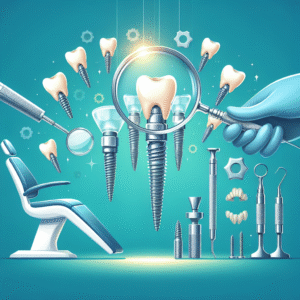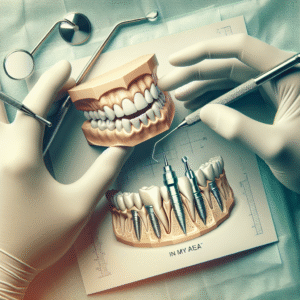All-on-4 Dental Implant Procedure Negatives
The All-on-4 dental implant procedure has gained significant popularity as a solution for patients seeking full-arch tooth replacement. Often marketed as Teeth-in-a-Day or Same-Day Implants, this technique promises a quick and efficient restoration of a patient’s smile. However, while the benefits are widely discussed, it’s equally important to examine the potential drawbacks. This article explores the negatives associated with the All-on-4 procedure, including complications, limitations, and alternative solutions such as Implant-Supported Dentures, Zygomatic Implants, and Bone Grafting for Dental Implants.
Understanding the All-on-4 Procedure
Before delving into the negatives, it’s essential to understand what the All-on-4 procedure entails. This technique involves placing four dental implants in the jawbone—two at the front and two at the back at an angle—to support a full-arch prosthesis. The primary appeal is that patients can receive Full-Arch Dental Implants in a single day, eliminating the need for multiple surgeries and extended healing periods.
Despite its advantages, the All-on-4 method is not without its challenges. Below, we discuss the key negatives associated with this procedure.
1. Limited Suitability for Patients with Severe Bone Loss
One of the most significant drawbacks of the All-on-4 technique is its reliance on existing bone structure. While the angled implants are designed to maximize bone contact, patients with severe bone atrophy may still face complications. Traditional implants often require Bone Grafting for Dental Implants to reinforce the jawbone, but the All-on-4 approach attempts to bypass this step.
However, if bone density is insufficient, the implants may lack stability, leading to failure. In such cases, alternative solutions like Zygomatic Implants—which anchor into the cheekbone (zygoma) instead of the jaw—may be necessary. These implants are longer and provide better support for patients with extreme bone loss, but they come with their own set of risks.
2. Higher Risk of Implant Failure Compared to Traditional Methods
While All-on-4 implants boast a high success rate, they are not immune to failure. The angled placement, while beneficial for avoiding bone grafting, can increase mechanical stress on the implants. Over time, this may lead to:
- Implant loosening due to uneven force distribution
- Prosthesis fractures from excessive pressure on fewer implants
- Peri-implantitis (infection around the implant) if oral hygiene is neglected
Compared to traditional Full-Arch Dental Implants, which may use six to eight implants for better load distribution, the All-on-4’s reliance on only four implants can be a disadvantage in the long term.
3. Limited Adjustability and Future Modifications
Another downside of the All-on-4 procedure is its lack of flexibility. Once the implants are placed and the prosthesis is attached, making adjustments can be difficult. For example:
- If one implant fails, the entire prosthesis may need replacement.
- Future bone loss could compromise the stability of the remaining implants.
- Switching to alternative solutions like Implant-Supported Dentures might require additional surgeries.
Patients who anticipate future dental work or bone changes may find the All-on-4 system restrictive.
4. Potential for Nerve Damage and Sinus Complications
The All-on-4 procedure involves precise implant placement near critical structures such as nerves and sinuses. Improper positioning can result in:
- Nerve damage, leading to numbness or chronic pain
- Sinus perforation if implants protrude into the sinus cavity
- Difficulty in speech and chewing if the prosthesis is not properly aligned
While experienced surgeons minimize these risks, complications can still occur, especially in patients with complex anatomies.
5. High Initial Cost and Potential Hidden Expenses
Although the All-on-4 procedure is often marketed as a cost-effective alternative to multiple implants, the upfront expense can be substantial. Additionally, patients may encounter hidden costs such as:
- Follow-up surgeries if complications arise
- Prosthesis replacements due to wear and tear
- Maintenance fees for adjustments and cleanings
In contrast, Implant-Supported Dentures may offer a more budget-friendly option for some patients, though they come with their own trade-offs.
6. Not Always a Permanent Solution
While All-on-4 implants are designed to last many years, they are not necessarily a lifelong solution. Factors such as:
- Natural bone resorption over time
- Prosthesis wear requiring replacement
- Changes in oral health affecting implant stability
can necessitate revisions or alternative treatments down the line.
7. Challenges with Bite Force and Eating Habits
Patients with All-on-4 implants may experience limitations in bite force compared to natural teeth or traditional Full-Arch Dental Implants. The reduced number of implants means:
- Hard or sticky foods may need to be avoided
- Uneven pressure distribution can cause discomfort
- Adjustment period required to adapt to the new bite
8. Alternative Solutions to Consider
Given these potential negatives, patients should explore other options, including:
- Zygomatic Implants: For those with severe bone loss, these implants provide an alternative anchoring method.
- Bone Grafting for Dental Implants: A more traditional approach that strengthens the jawbone before implant placement.
- Implant-Supported Dentures: A removable option that offers flexibility and easier maintenance.
Conclusion
The All-on-4 dental implant procedure offers a fast and effective solution for full-arch restoration, but it is not without its drawbacks. From limited suitability for bone loss patients to potential long-term complications, weighing the pros and cons is crucial. Consulting with a qualified dental professional and considering alternatives like Zygomatic Implants or Implant-Supported Dentures can help patients make an informed decision.
Ultimately, while Teeth-in-a-Day sounds appealing, understanding the negatives ensures realistic expectations and better outcomes for those considering this treatment.
Frequently Asked Questions
1. What are the potential downsides of the All-on-4 dental implant procedure?
Some potential negatives include the risk of infection, implant failure, and the need for bone grafting if jawbone density is insufficient. Additionally, the procedure can be costly and may not be covered by insurance.
2. How long does recovery take after an All-on-4 procedure?
Recovery typically takes a few weeks, with initial swelling and discomfort subsiding within the first 7–10 days. Full healing and osseointegration (bone fusion) may take several months.
3. Are All-on-4 implants permanent?
While All-on-4 implants are designed to be long-lasting, they may require adjustments or replacements over time due to wear, bone changes, or complications. Proper care is essential for longevity.
4. Can anyone get All-on-4 dental implants?
Not everyone is a candidate. Patients with severe bone loss, uncontrolled diabetes, or certain autoimmune conditions may not qualify. A thorough dental evaluation is necessary to determine eligibility.




